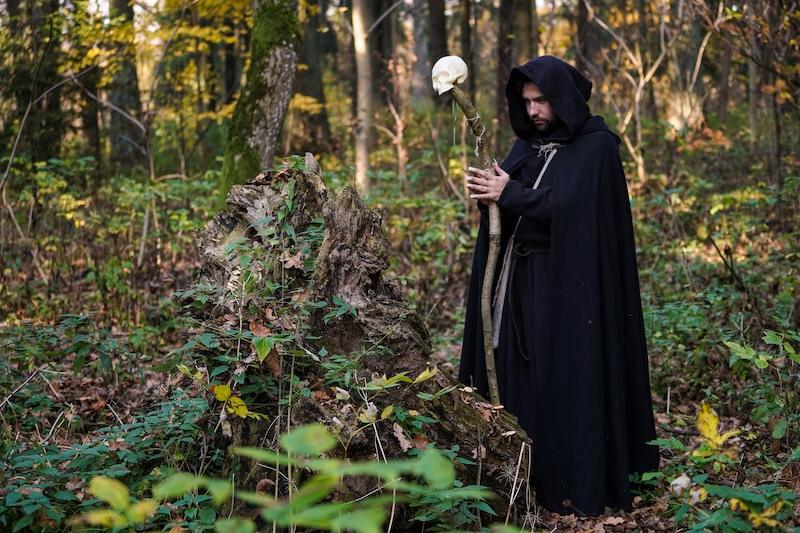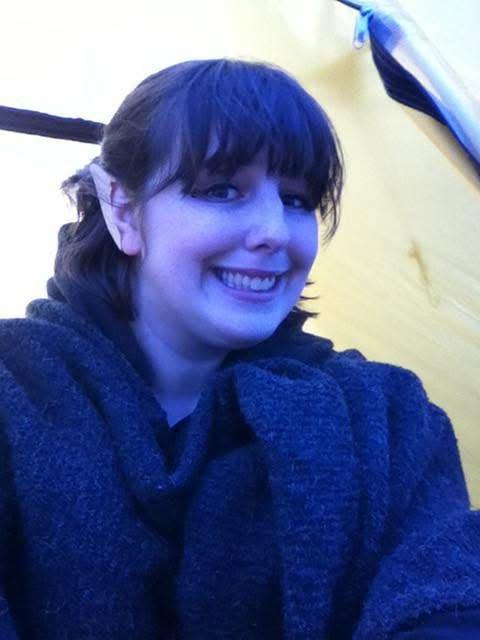You enjoy the experience, the dressing up, the improvisation—but what exactly goes into making it all happen? Vicky Brewster gives us a peek into the story preparation for a Live Action Role Play (LARP) game.

It always starts with a good idea, more often than not on the drive home from someone else’s game. It’s something you hear a lot from other game runners. The drive home devolves into what you would have done differently, which turns into fresh ideas. This is how all of my games came into being: through discussion and speculation. What would happen if the players cast a ritual at the beginning of the game and spent the rest of the weekend trying to fix their own mess? What if Poirot was about to reveal the murderer, but then a monster swept out of the darkness and killed him, and the players had to work it out themselves?
Part of it is this – the ‘what if’ process. Part of it is thinking of terrible experiences to put my friends through.

Hello. My name is Vicky, and I run small horror LARPs through Blanco’s Games.
The most fun and useful and frustrating part of designing a game is the collaborative experience. Bouncing ideas off each other, and accounting for the fact we all have very different brains that want to get very different things out of running a game. I know the experience I want the player to have, where the highs and lows should be, and to make sure they have many intricate relationships with other players. I want this cool thing to happen, but I don’t really care why, as long as it’s cool. I want my players to feel horrified and surprised and completely free to do whatever they want.
(Pictured: Vicky at their first-ever LARP event, where they met husband Greg)
Even I acknowledge that this alone would make a pretty rubbish event. “But why has this secret society been planning to end the world for a century?†my husband and fellow game-runner said. I don’t care – but yes, a lot of our players will. So I suppose he’s useful.
“What’s stopping them from all just killing each other and ending the game?†Rachel, our other game-runner, asks. Well, yes, I suppose if I give everyone a very strong motive to factionalise and quite so many terrible secrets, the chances of them solving that with stab wounds is probably quite high.
Collaboration can be frustrating, but it makes for a robust game that the players almost certainly won’t break. But I still have my little empires that I’m very good at, that I keep mostly for myself. One of these is character backgrounds. Sometimes we ask players to provide a quick overview of who they want to play and what their background is, as we did in Stay for The Ritual. I then rip them to pieces, inventing neglectful parents and ex-wives, drug abuse issues, and that one time they got drunk enough to tell this person everything, and now, of course, they are mid-blackmail fiasco.
(Pictured: Vicky and Greg in character)

Sometimes we provide archetypes or ask the players what kind of experience they want from their game, as we did in The Play’s the Thing and The Farmer Wants a Wife. In these cases, I have a strong idea of the roles I want in the game, but will use what I know about the players and what I think they will enjoy to augment and add flavour to a character. This is one of the nice things about the first run of a game almost always being with players we know well. It gets more interesting (read: terrifying) when we make games for players we don’t know well. I recently made myself chuckle rereading a character background in which I had written that a character’s parents had died in a tragic hot air balloon accident. The player in question quite likes the silly side of horror, and although I knew it was deeply unlikely to come up in game, I knew it would make us both smile just to know it was there.

My aim is always that there should be enough angst and secrets and connections between players’ characters that, if we wanted to, we could just gather them together in a house for a weekend and provide meals. They would entertain themselves quite happily with what we’ve given them on the page.
Of course, we don’t do that. We also throw horrors (existential and physical) at them fairly relentlessly – but only until midnight, when we go to bed. We’re not monsters. And I, for one, am old and need to sleep.
(Pictured: Vicky in character)
One of the issues of working collaboratively on a game can be the discovery that you’re actually writing completely different games. We had this with Stay for the Ritual, when poor Rachel was stuck between my husband and I, who were describing very different games to her but claiming they were the same thing. That was a tough plot meeting. But we fixed it by apportioning who would write what. I focused on the ‘now’; Greg focused on the ‘then’. In a similar way, we’re a bit stuck for a game we want to run in the future: the escape room LARP. Greg envisions it as a straight escape room spread over a large country house, somehow paced to run for a whole weekend. I envision it as an espionage amnesia alien abduction. See? Bit different. We’ll work it out though. Probably.
But the thing that unites us all is that we want to run games where players can do anything, within reason. We’ve recently hit on the term ‘sandbox’. We create a world, and the diegetic rules for that world, and the backgrounds of the characters. We then present the players with a problem, and they can fix it however they want. We try our best to think up the most likely endings, and usually have some ideas for how to conclude the game – the ‘good’ ending or the ‘bad’ ending or, very occasionally, the ‘middle’ ending.
But the players don’t at all have to play the way we expect them to. We were stuck in a bit of a ref huddle nightmare on the last day of Stay for the Ritual, trying desperately to think of how we would provide a satisfying ending based on what the players wanted to do. We had something workable, but it was a bit bland. Then a player put their head around the door:
“Sorry to interrupt, but we’ve changed our mind. We’ve decided to fix it with time travel!â€

Had we even vaguely envisioned this would happen? Nope. But it worked. And we could make something far more satisfying to conclude the game that way.
This is sometimes a terrifying way of doing things, and I know a lot of game runners like much more control than this, for obvious reasons. But it’s what we like to do, and now we’ve started re-running games, it’s so exciting and keeps the game fresh, seeing the different approaches different player parties take. And none of them are right or wrong – whatever happens, we’ll make it work. And then we’ll sleep for three days to recover!



